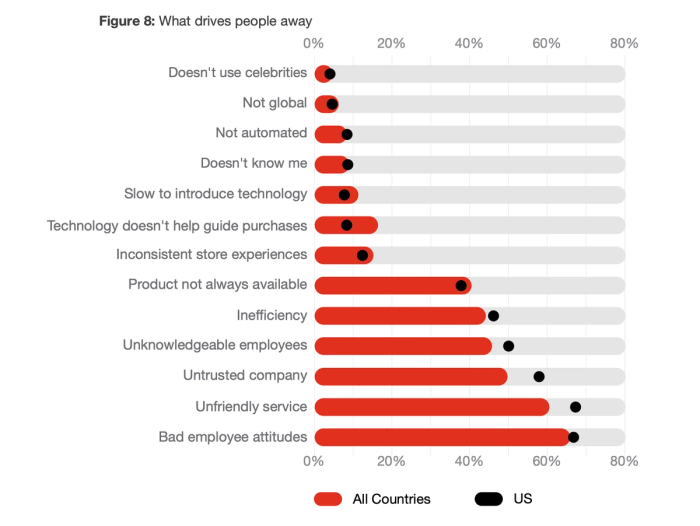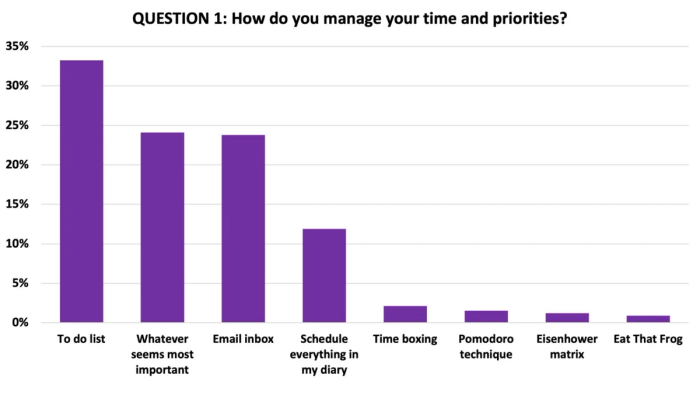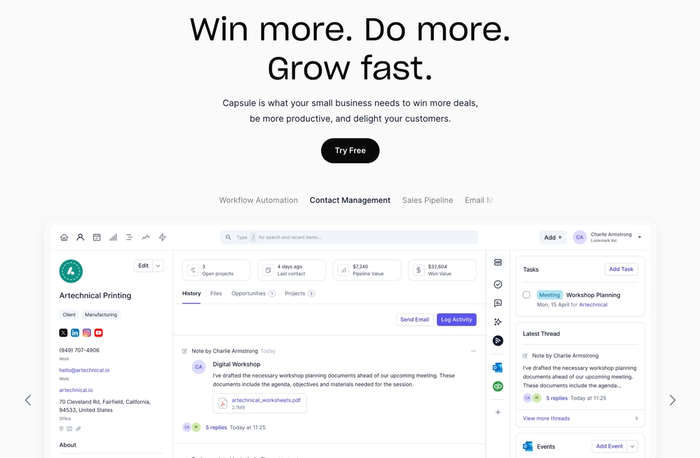Managing clients looks simple on paper. Most people figure it’s just about staying polite and answering emails on time – how hard can it be? In reality, client management takes more than a friendly attitude or the occasional follow-up.
Every project brings its own personalities, expectations, and surprises to the table.
Knowing how to handle all of that is what sets great client managers apart.
Today, we’re getting straight to the point: here are the must-have skills that separate solid client management from just winging it, plus a quick checklist to keep you sharp.
Best client management skills
Proactive approach
You’re deep into a client project and notice the requirements are starting to shift. At this moment, you have a few options:
- You can wait for the client to bring up the changes and react later.
- You might try to ignore the signals and hope things settle down.
- Or, you can address the shift early: flag it to the client, outline next steps, and keep the project moving.
Businesses that focus on anticipation and support often outperform their competitors. Accenture’s research shows companies that approach customer service as a value center achieve 3.5 times higher revenue growth than those that don’t.
The link is clear: proactive strategies directly impact growth and efficiency.
Building a habit of proactive customer service doesn’t always come naturally, especially if you’ve worked in reactive environments or typically respond to client requests only when they arise.
Here’s how you can start making proactive communication part of your client relationship management routine:
- Analyze past projects and feedback. Identify recurring project details, industry trends, and pain points in client interactions to spot patterns early.
- Share regular updates. Keep clients in the loop on project outcomes, milestones, and any changes that may impact their expectations – personal attention makes clients feel valued!
- Use management software or a centralized platform. Track client data and notes from team meetings to organize valuable insights and stay on the same page.
- Set and manage clear expectations. Define responsibilities and confirm understanding to build stronger client relationships.
Example:
You’ve just launched a new PPC campaign for a client in a competitive industry. After the first week, you notice that the cost per click is lower than forecasted, and early conversions are higher than expected. Instead of waiting until the end of the month to report results, you choose a proactive approach:
- You send a concise update highlighting the positive trends in campaign performance, supported by current client data and key performance indicators.
- You share potential opportunities for scaling (such as increasing budget in high-performing segments or testing new ad creatives) based on the initial analytics.
- You document the changes and insights so both your team and the client have an up-to-date record and can easily track progress.
That's how you show the client you’re invested in their business growth, not just ticking off tasks – and that's what positions you as a true partner in their ongoing success. Especially since, according to recent PwC research, bad employee attitudes are one of the top reasons clients walk away. Clients leave when they feel disappointed by poor service and a lack of genuine attention.

Proactive habits like these are essential client management skills, and they set you up for long-term growth no matter how complex the project or the client’s industry.
Adaptability
Rigid routines don’t survive in client management. Markets shift, and even the best-laid project plans hit roadblocks.
What separates a good project manager from a great one is the ability to adjust direction quickly.
When a client drops unexpected feedback in the middle of a campaign, stay steady and pivot with purpose. Brief your team right away: spell out exactly what’s changed, what needs to shift, and who owns each new task. Then circle back to your client with specific questions that get to the root of their new direction. Understanding the “why” behind the change lets you refine your approach.
You might find yourself juggling urgent feedback, a new decision-maker, or a completely different goal than yesterday. It's completely normal in client management. Being adaptable means letting go of perfect plans and focusing on the path forward, no matter how often it zigzags. When clients see you embracing change, they feel supported. That’s how strong client relationships survive – and thrive – when things are uncertain.
Adaptability is about what you do in the moment when change arrives. Clients remember the pros who can turn a curveball into a new opportunity.
Companies that invest in adaptability see measurable results: up to 56% higher productivity and a 70% boost in talent retention (We Are Drew). Bring this mindset to client work, and you become the partner clients turn to when things get real, because they know you never get stuck.
Time management
“Client management” is a myth – it’s often clients, plural. Managing a handful of demanding clients is standard, and that’s where time management becomes an essential competency.
Most people don’t actually have a real system for keeping all those balls in the air. The data backs it up: just look at how people really manage their time and priorities.

According to recent research, a third of professionals rely on a simple to-do list. Nearly as many just do “whatever seems most important.” About a quarter use their email inbox to track tasks. Only a small minority are using strategies like time boxing, Pomodoro, or the Eisenhower Matrix.
When you’re managing multiple client relationships, that kind of “organized chaos” just doesn’t cut it.
Relying on an overflowing inbox or a random to-do list might work with one client, but it quickly falls apart as your roster grows. You need to see deadlines, client expectations, and recent communications at a glance.
Here’s what works in practice:
- Pick one system that matches your brain – maybe a CRM software, a shared client portal, or time blocking in your calendar.
- Don’t let email rule your day. Schedule set times to respond, then get back to deep work.
- For every new client or campaign, create a simple dashboard with key project requirements, files, and contact history. This saves you from panic-searching or missing something important.
Listening
Genuine listening is one of the most underrated skills in managing client relationships.
When a client shares feedback, concern, or even a stray comment, your job isn’t to leap to solutions but to reflect what you’ve heard – and check for understanding.
Every client conversation is a chance to strengthen trust – or lose it. People remember the service provider who recalls their last comment or asks about the details they shared weeks ago. Your job is about being present and following up on what matters to them.
Always:
- Pause and paraphrase what the client says before taking action, instead of assuming you've understood without checking. "Just to make sure I’m clear, you’d like us to shift focus to the new product line this quarter, right?”
- Take notes after every meeting and review them before your next check-in. Don't jump straight to solutions without clarifying what’s really needed. “Last time, you mentioned the new approval process…”
- Flag anything the client labels as important and bring it up again later. Always bring feedback to the surface and address it directly. "You said timely delivery was your top priority, so here’s how we’re tracking our progress this week.”
- Ask open questions when you sense uncertainty or hesitation. Don't ignore hints of confusion or changes in tone. “Is there anything about this plan that you’re unsure about, or that you’d like us to explain differently?”
Foresight (Expectation setting)
Clients rarely leave because of one bad result – they leave when they feel lost or blindsided. Foresight is the skill that fixes that. For a client manager, it means putting all the cards on the table: what’s happening, when, and what you’ll both need to get there. For the client, it means feeling confident about every step, from kickoff to wrap-up, because nothing arrives out of nowhere.
You cannot predict everything, but what you can do is lay out the ground rules and agree on what success looks like together. Before the work starts, have a real conversation about what’s included, what’s out of scope, and what will require a rethink or a new budget. Get specific about timelines, responsibilities, and where client input is critical.
Throughout the project, check in regularly – not just on progress, but on the original agreement itself.
Are expectations still aligned?
Has anything changed that needs a quick reset?
If new requirements pop up or priorities shift, flag it early and talk through the impact. Keep a written record of decisions so everyone stays on the same page.
Internal communication
Internal communication isn’t the first thing most people associate with managing clients. But if your own house isn’t in order, client work will always feel like an uphill battle. A team that talks and aligns on priorities is better equipped to handle the curveballs and questions that come from every direction.
To get your internal game right:
- Kick off every new project with a clear team briefing, spelling out roles, client requirements, and key deadlines.
- Keep all notes, updates, and documents in a shared location.
- Run regular check-ins to catch up on client satisfaction and flag any issues before they reach the client.
- Document every decision and make sure everyone knows about changes in scope, timelines, or priorities.
All of these steps are much easier – and far less manual – with Capsule CRM.

With Capsule CRM, you'll always know where to find a client’s feedback, contract details, or the latest round of changes. And when project requirements or marketing campaigns change, Capsule lets you update everyone fast, keeping your team on track and clients in the loop – and this level of coordination is impossible to match with spreadsheets or scattered tools.
Solution focus
This is one of the most important client management skills for successful client relationship management, and numbers speak for themselves:
- 75% of employers say problem-solving skills are among the top skills they seek in new hires.
- 92% of managers consider strong problem-solving skills a critical component of leadership.
- 84% of CEOs cite problem-solving ability as one of their top five requirements for new recruits.
Every client-facing professional hits obstacles: unrealistic timelines, shifting requirements, and last-minute surprises. Solution focus is the discipline of shifting from analysis to action, especially when tensions are high. Instead of spending meetings dissecting what went wrong, you guide everyone to, “What can we do now?”
When a client voices a concern, acknowledge the impact, then quickly map out concrete options.
For example:
- If a delivery can’t be met on time, suggest a phased rollout so the client gets partial results now while you finalize the rest.
- When a client requests a new feature outside the agreed scope, offer a mini-proposal outlining cost, timeline, and alternatives – so they can make an informed decision instead of just hearing “no.”
- If you spot a budget overrun mid-project, propose a plan to reallocate resources, reduce scope in lower-priority areas, or bundle extra value to offset the additional spend.
- When a client’s feedback is vague or seems off-target, reframe the conversation with targeted questions and offer two or three possible solutions for them to react to, clarifying what success looks like.
- If there’s a technical snag that slows progress, loop in your team for a quick brainstorming session, and present the client with a shortlist of tested fixes rather than waiting until everything is perfect.
Bring clients into the solution-making process – ask what matters most to them right now. That creates buy-in and makes every fix collaborative, not just reactive.
Context memory
Context memory is the skill of tracking the “story so far” with each client – what’s been tried, what’s been said, and what’s mattered in the past – so you never start from scratch or offer generic advice. Remembering context separates forgettable service from truly standout partnerships.
It’s not enough to recall a client’s name or their latest project. Context memory means knowing that a client had issues with onboarding last year, or that they prefer data visualizations over long email reports, or that their company’s peak season starts in September. This attention to detail builds trust, saves time, and proves you’re invested in a successful client relationship.
To build context memory:
- Review notes and recent communications before every call or meeting, so you can reference past concerns or wins right away.
- Use your CRM – like Capsule – to log not just milestones, but client characteristics, key decisions, and even preferred ways of working.
- Follow up on previous conversations with genuine interest. Ask, “Did the change we made last month help with your team’s workflow?” or “Is your new office move affecting any upcoming campaigns?”
Clients feel seen and valued when you connect today’s conversation to last month’s goals. Context memory is the difference between treating someone like a ticket number and making them feel like a true business partner.
What about other client management skills?
While these skills form the backbone of effective client management, they’re not the whole picture.

Every client relationship brings unique challenges and opportunities. Skills like negotiation, active listening, and strategic thinking will always matter – so will analytical skills, soft skills, and a willingness to keep learning.
Some situations call for deep technical know-how; others demand creativity or... even a sense of humor. Sometimes, you need to be a guide, a coach, or a problem-solver all in the same day. Great client managers build their toolkit over time, adapting as clients and expectations evolve.
The point isn’t to tick every box at once, but to know where your strengths are, keep developing new ones, and bring your best to every client, every time. The more well-rounded your skills, the more you stand out – and the more clients trust you with their biggest priorities.
Client management skills checklist
Must-have (Non-negotiable) skills
- Proactive problem-solving: Spot issues early and act before they become problems.
- Adaptability: Adjust quickly when client needs or project requirements change.
- Time management: Organize schedules and priorities for multiple clients without missing deadlines.
- Active listening: Absorb, reflect, and confirm client feedback without assumptions.
- Expectation setting: Define what will (and won’t) happen up front, and keep everyone aligned as you go.
- Internal communication: Keep your team informed and in sync about every current project.
- Context memory: Remember each client’s unique history, past decisions, and preferences.
- Solution focus: Move conversations forward when challenges hit, turning obstacles into options.
Nice-to-have skills
- Analytical skills: Use data to uncover trends and client needs, not just to report numbers.
- Negotiation skills: Find win-wins on budgets, timelines, or deliverables.
- Written communication: Craft clear, concise emails and docs clients actually understand.
- Tech savvy: Use tools like CRM, project management apps, and document sharing efficiently.
- Creativity: Suggest new campaign angles or unexpected solutions when clients are stuck.
- Conflict management: Calm tense situations and keep discussions productive.
- Storytelling: Help clients visualize the impact and outcomes of your work.
Over to you
Effectively managing clients takes more than following a script. It’s a craft – one that involves mastering client management skills in real, everyday moments, not just theory. The most successful client managers stay curious and always look for ways to add value.
When you invest in these habits, you build long-term partnerships and a reputation for reliability.
Bring your full attention, use the right tools, and treat every client as unique. That’s how you earn loyalty and make a lasting impact in your field. Good luck!
![Non-negotiable client management skills [+checklist]](https://cdn.sanity.io/images/poftgen7/production/59df73bdf5eba1026cfe80db9bde03940907afe7-1920x1146.jpg?rect=1,0,1918,1146&w=800&h=478&q=100&fit=max&auto=format)



